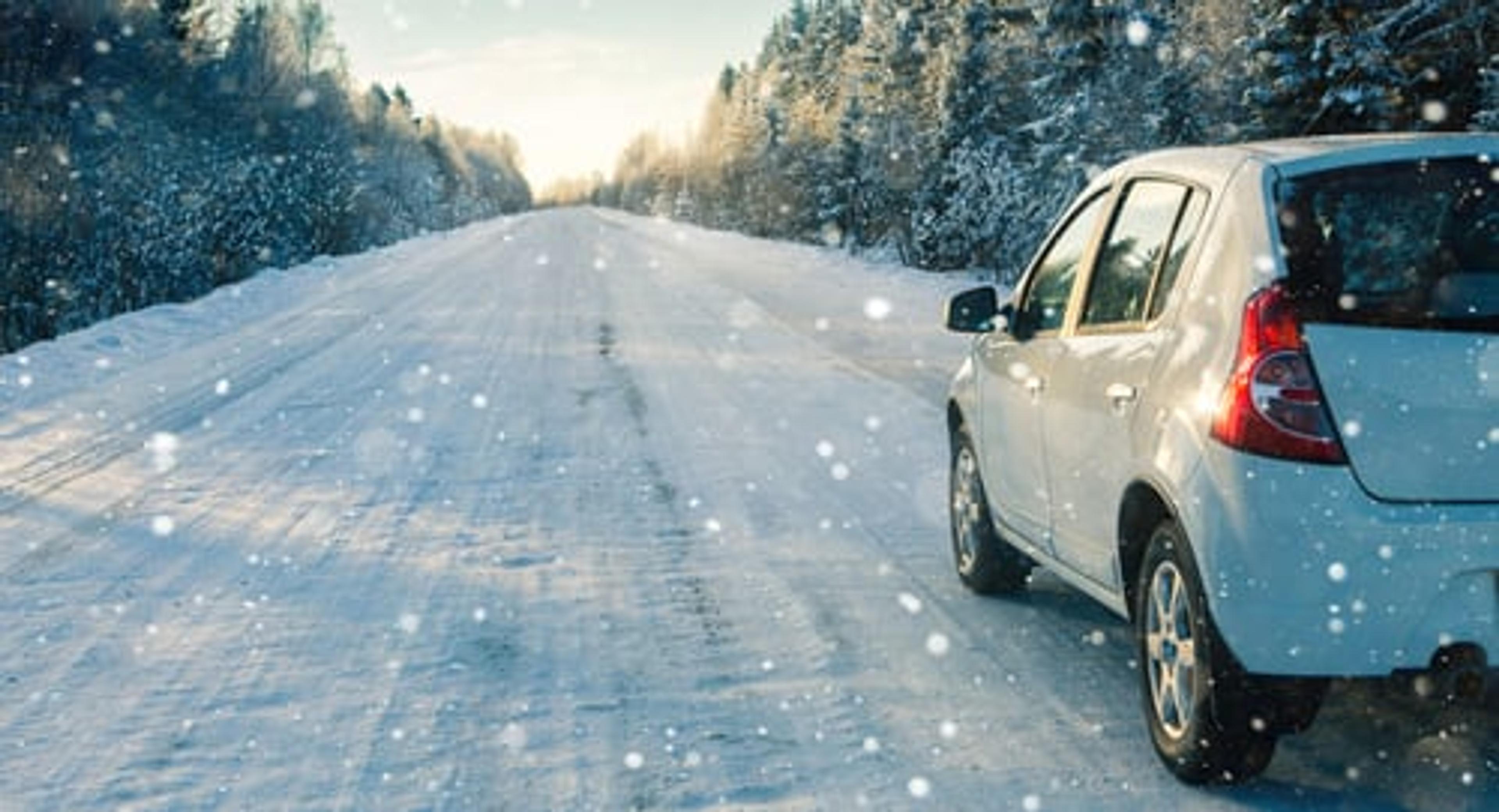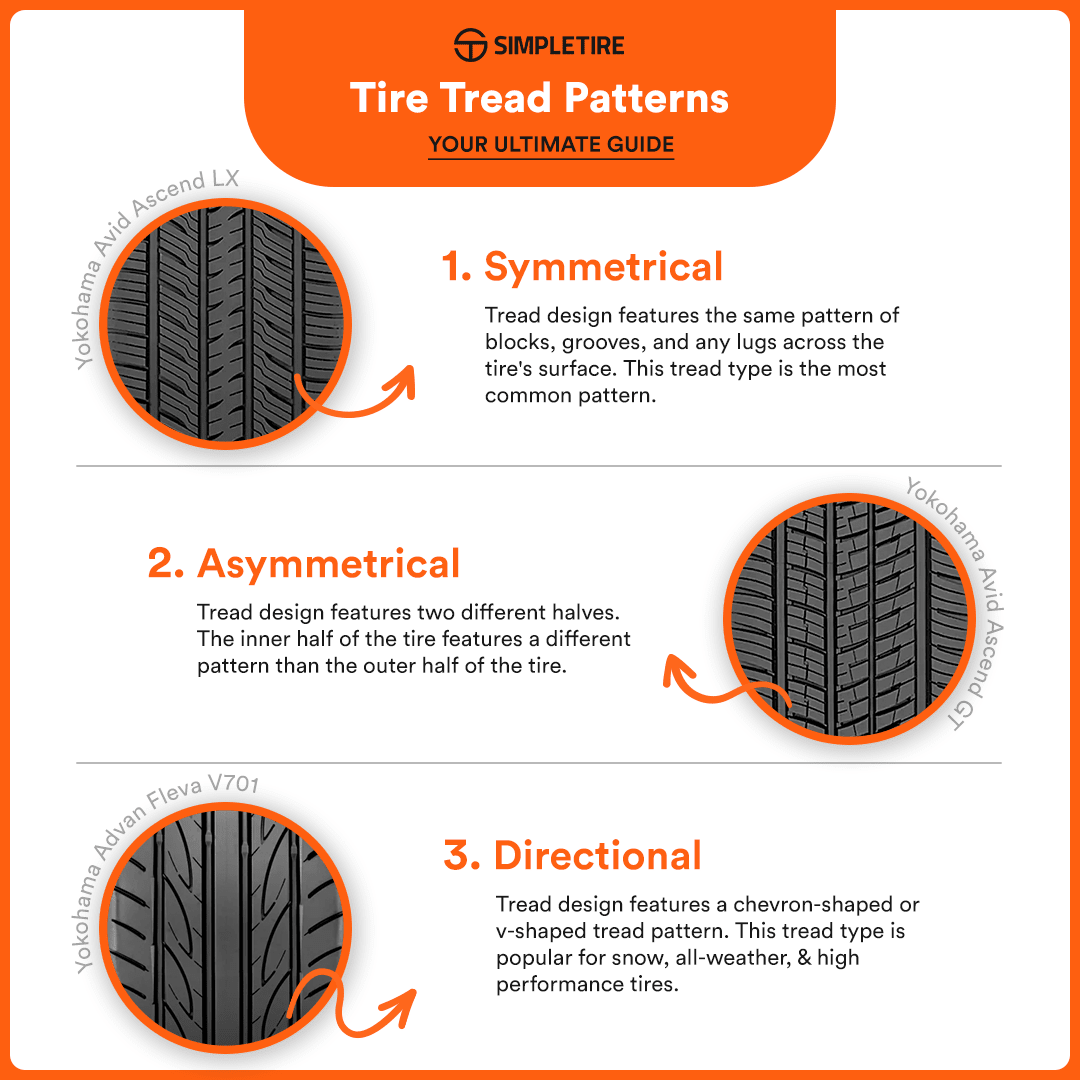Tire Buying Guides
What Are Winter Tires? Your Essential Guide to Winter Driving Safety

Free shipping
Best price guarantee
Special pricing
Financing with Resolve
Easy returns
Tire Buying Guides

Winter tires transform your vehicle's performance when temperatures drop and roads become treacherous with snow and ice. These specialized tires use advanced rubber compounds and unique tread designs that maintain flexibility and grip in conditions where regular tires fail.
The difference between winter tires and standard all-season tires becomes critical when thermometers dip below 45°F. At these temperatures, the rubber in conventional tires hardens like plastic, reducing their ability to grip the road and increasing stopping distances dramatically.
Modern winter tire technology combines decades of engineering expertise with innovative materials science. The result: tires that bite through snow, channel away slush, and maintain control on ice-covered roads where other tires would leave you sliding helplessly.

Winter tires are purpose-built for cold-weather driving, engineered with specialized rubber compounds that remain pliable when temperatures plummet below 45°F. Unlike all-season tires that stiffen in cold conditions, winter tires maintain their elasticity through a careful balance of natural rubber, silica, and other polymers designed specifically for freezing temperatures. This fundamental difference in rubber chemistry allows winter tires to conform to road surfaces and maintain the crucial contact patch needed for safe winter driving.
The distinctive tread pattern of winter tires sets them apart from their all-season counterparts. Deep grooves, typically 10 to 12/32 inches when new, create channels that pack snow and eject slush efficiently. The tread blocks feature jagged, irregular edges that bite into snow like teeth, while thousands of thin slits called sipes create additional gripping edges. These sipes work like suction cups on ice, opening and closing as the tire rolls to maintain constant contact with slippery surfaces.

Winter tire engineering focuses on maximizing surface interaction in conditions where traditional tires lose effectiveness. The tread blocks incorporate sharp, multi-angled edges that slice through snow rather than riding on top of it. These blocks work together with circumferential grooves to create a self-cleaning action: as the tire rotates, centrifugal force expels packed snow, ensuring fresh tread contacts the road surface with each revolution.
The hydrophilic properties of winter tire compounds represent another crucial innovation. These rubber formulations actively attract and absorb the thin layer of water that forms on ice surfaces, eliminating the lubricating effect that causes loss of control. Combined with the mechanical grip from sipes and tread patterns, this chemical attraction creates multiple redundant safety systems working simultaneously.
Modern winter tires also employ variable pitch tread designs that reduce road noise, a common complaint with older snow tire technology. By varying the size and spacing of tread blocks, engineers minimize the harmonic vibrations that create the characteristic humming sound, making winter tires quieter and more comfortable for daily driving while maintaining their essential safety features.
Winter tires and all-season tires serve distinct purposes, each tailored to specific driving conditions. The primary difference lies in their adaptability to temperature variations and how their tread designs handle different road surfaces. Winter tires excel in colder climates, providing superior traction, while all-season tires offer a more balanced performance across a range of moderate conditions.
Winter tires utilize compounds engineered to remain supple even in extremely cold environments, ensuring reliable traction on icy and snowy surfaces. Their flexible rubber formulation is designed to maintain grip at temperatures that would cause all-season tires to become rigid and less effective. Unlike the heat-resistant composition of all-season tires, winter tires incorporate specialized materials that preserve elasticity, allowing for consistent performance even as temperatures dip below freezing.
The tread design of winter tires includes a significantly higher number of sipes compared to all-season tires, enhancing their ability to maintain traction on slick, icy roads. These sipes function like micro-channels, creating multiple contact points with the road to improve grip. Winter tires also feature deeper tread depths, typically ranging from 10 to 12/32 inches, which aid in snow compaction and release, maintaining a clear contact patch. On the other hand, all-season tires focus on water dispersion to prevent hydroplaning, which is less effective in handling snow and slush. The tread blocks of winter tires adapt to the road by flexing and clearing packed snow, offering superior traction under harsh winter conditions.
Winter tires bring together cutting-edge technologies to ensure vehicles handle winter's most challenging conditions with ease. Understanding these essential features can guide you in selecting the right tire for your vehicle, ensuring safety and performance when it matters most.
Winter tires utilize specialized rubber formulations that adapt to the unique demands of freezing temperatures. These formulations often include silica to enhance traction on slick surfaces, while the rubber blend remains supple to prevent stiffening in the cold. This careful composition enables the tire to maintain its shape and contact with the road, resulting in reliable performance throughout the winter season. By leveraging innovative tire compound materials, winter tires deliver consistent grip and control, keeping you safe on icy and snow-laden roads.
 The tread designs of winter tires are crafted to optimize performance in snowy and icy conditions. Featuring directional tread blocks, they offer enhanced stability and control during maneuvers on winter roads. Specialized channels efficiently displace snow and slush, ensuring continuous traction by keeping the tire surface clear. Unique siping patterns create additional edges that improve grip, while the tread's variable pitch reduces noise for a quieter ride. These intricate designs ensure that winter tires provide the traction and handling needed to navigate winter's challenges with confidence.
The tread designs of winter tires are crafted to optimize performance in snowy and icy conditions. Featuring directional tread blocks, they offer enhanced stability and control during maneuvers on winter roads. Specialized channels efficiently displace snow and slush, ensuring continuous traction by keeping the tire surface clear. Unique siping patterns create additional edges that improve grip, while the tread's variable pitch reduces noise for a quieter ride. These intricate designs ensure that winter tires provide the traction and handling needed to navigate winter's challenges with confidence.
Determining the right time to switch to winter tires involves understanding climate patterns and assessing the roads you typically travel. These tires excel in cold weather, so timing their installation is key to maximizing their benefits and ensuring road safety.
Winter tires should go on your vehicle as soon as the consistent daytime temperatures drop to around 45°F or lower. At this point, the advanced rubber formulations used in winter tires maintain their grip and elasticity, unlike all-season tires that can harden and lose effectiveness. When spring arrives and temperatures are regularly above 45°F, it's advisable to revert to all-season or summer tires to preserve the winter set for future use. Consider the colder temperatures that often occur overnight or during early morning hours, which can impact driving conditions if you commute during these times.
Your location significantly influences the need for winter tires. In places where snow and ice are common, winter tires are essential for maintaining control and safety on the roads. For areas with sporadic and mild snowfalls, all-weather tires might be suitable, but it's crucial to assess your regular driving conditions. Regions with mountainous terrains or rural roads often require winter tires or chains due to their challenging nature. Even in cities with efficient snow clearance, the added traction winter tires provide can enhance safety during the colder months, ensuring a confident driving experience.
Winter tires come in various forms, each engineered to cater to specific driving environments and preferences. Whether navigating urban streets, rural paths, or icy highways, selecting the right type of winter tire can significantly enhance your vehicle's safety and performance.
Studless winter tires are popular for their adaptability and convenience. These tires use cutting-edge materials and sophisticated tread designs to offer excellent traction on snowy and icy roads without relying on metal studs. The rubber formulation stays soft in cold temperatures, which helps maintain road contact. The tread patterns include multiple grooves and edges that grip slippery surfaces effectively. Unlike studded tires, studless options typically offer a quieter ride on dry pavement, providing a smoother driving experience. Furthermore, they are permitted on roads in all states year-round, making them a practical choice for various driving conditions.
For drivers facing severe winter conditions, particularly in rural or mountainous regions, studded winter tires are an ideal choice. These tires incorporate metal studs within their tread, providing unparalleled traction on icy surfaces. The studs dig into the ice, delivering mechanical grip that can be crucial for maintaining control in extreme conditions. However, the added traction comes with some trade-offs. Studded tires tend to generate more road noise and can cause wear on pavement surfaces. Due to their potential impact on roads, their use is often subject to seasonal restrictions in many states. For those living in areas where ice poses a significant challenge, the benefits of studded tires often outweigh these limitations.
Performance winter tires cater to enthusiasts who drive sports cars or high-performance vehicles during the winter months. These tires offer a blend of enhanced winter traction and responsive handling, ensuring that drivers do not have to sacrifice performance for safety. The design typically includes a lower profile and stiffer sidewalls, which contribute to precise steering and stability at higher speeds. While they excel on dry roads, some performance winter tires may not offer the same level of traction in deep snow compared to traditional winter tires. They are well-suited for regions where roads are regularly cleared of snow but where icy conditions still demand specialized winter tire technology.
Winter tires deliver outstanding performance across various winter conditions, ensuring safety and reliability whether traversing snowy paths, icy stretches, or wet, slushy roads.
Winter tires excel in snowy environments with tread designs that manage snow effectively. The tread features deep grooves and expansive channels that push snow away from the tire, maintaining a clean contact area with the road. This design helps the tire bite into the snow, creating a stable grip that enhances traction. The rubber's flexibility allows it to adapt to the road's surface, maintaining consistent performance even in loose, powdery snow.
On icy surfaces, winter tires utilize a multitude of fine sipes that provide essential grip by engaging with the ice's slick surface. These sipes create numerous tiny edges that contribute to better traction. The tire's rubber compounds are engineered to tackle the thin water film often found on ice, improving grip and reducing slip. Studded tire options are available for extreme icy conditions, where metal studs offer additional anchoring by penetrating the ice and enhancing stability.
Winter tires are designed to handle wet and slushy conditions with efficiency. Their wide circumferential grooves are adept at channeling away water and slush, reducing the likelihood of hydroplaning. The tread pattern is crafted to maintain road contact even at lower temperatures, ensuring reliable traction. The sipes continue to perform effectively, providing grip and stability even when navigating through slushy terrains.

Winter tires are engineered to provide distinct advantages in cold weather, enhancing safety and performance under challenging conditions. Their specialized design makes navigating winter roads a more manageable task.
Winter tires are integral to safe driving during the colder months, featuring advanced tread patterns and rubber compounds that allow for significant improvements in grip and braking efficiency. This design ensures confidence when maneuvering in unexpected situations, reducing the chances of losing control. The ability to navigate through deep snow with ease minimizes the likelihood of getting stranded, while consistent handling reinforces the vehicle's stability, ensuring other drivers can anticipate and react to your vehicle's movements effectively.
These tires are specifically designed to handle winter's rigors, providing drivers with the ability to accelerate smoothly even when roads are covered with ice and snow. Their enhanced traction translates to superior performance when climbing hills, while the unique tread design ensures that cornering on slick surfaces remains controlled. Winter tires excel in maintaining dependable performance throughout the season, adapting effortlessly to varying winter conditions to deliver a secure driving experience.
Investing in winter tires offers financial benefits by optimizing tire usage throughout the year, allowing for longer wear and reducing replacement frequency. Insurance providers often recognize the decreased risk associated with winter tire use, offering potential premium reductions. Winter tires help avoid costly incidents by improving vehicle handling in adverse conditions. Moreover, they provide a more fuel-efficient alternative to chains, ensuring a smoother ride without the additional drag that chains introduce.
Selecting the right winter tires involves a comprehensive approach that exceeds simply finding the correct size. It's essential to align your tire choice with your vehicle’s needs and your driving environment, ensuring optimal safety and performance throughout the winter season.
To select suitable winter tires, begin by examining your vehicle's technical requirements. Refer to the owner's manual to confirm the appropriate tire size and load index, both crucial for maintaining optimum performance and safety. The speed rating should match your typical driving velocities to ensure consistent tire performance. For those who use their vehicle for towing, it’s vital to choose tires that can accommodate the additional weight, ensuring stability and durability. Confirm that your tire choice integrates seamlessly with your vehicle’s safety systems, like traction control, to ensure these features function effectively in winter conditions.
Your daily driving habits and routes significantly influence the choice of winter tires. Those who frequently travel on highways may benefit from tires designed for reduced road noise and improved fuel efficiency. Conversely, drivers navigating rural or less-maintained roads might prioritize tires with superior traction for challenging surfaces. Consider the typical winter climate in your area; frequent snowfalls or icy conditions should guide your selection. Additionally, assess the road inclines you encounter regularly, as this impacts tire performance. Parking scenarios, whether in a garage or on the street, can also dictate the necessary tire features for optimal winter safety.
Budgeting for winter tires involves more than just the initial purchase price. Quality winter tires generally range from $100 to $300 each; however, remember to account for mounting and balancing costs. Investing in an extra set of rims dedicated to winter tires can streamline seasonal transitions and extend the life of your regular wheels. While upfront expenses might seem substantial, remember that winter tires provide long-term safety benefits, potentially reducing accident-related costs and enhancing overall vehicle control in winter conditions.
Winter tires represent a crucial investment in your safety and peace of mind during the coldest months of the year. By understanding their unique features and benefits, you can make an informed decision that keeps you confident on winter roads. When you're ready to upgrade your winter driving safety, we invite you to shop for tires online and find the best deals with us.
Search By